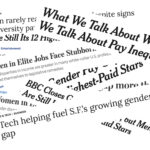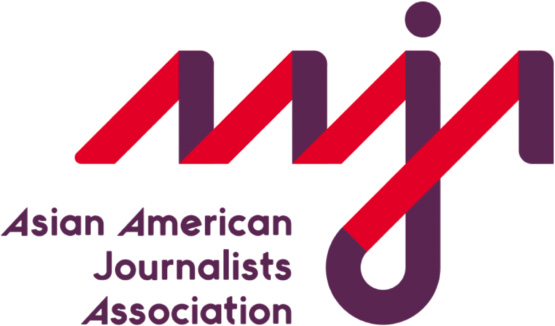Investigative
Student work • Philadelphia 2017
 At the nation's five largest papers, newsroom leaders are still disproportionately white.
At the nation's five largest papers, newsroom leaders are still disproportionately white.
Published July 27, 2017

The New York Times in 1942. Credit: Marjory Collins / U.S. Office of War Information via Library of Congress
Fifty years ago, riots sparked by racial unrest broke out in major cities across the United States, leaving dozens of people dead and neighborhoods across the nation in ruins.
The urban riots revealed a race problem in America, but also shined a light on a race problem in America’s media.
A presidential commission investigating the causes of the riots found that “the press has too long basked in a white world looking out of it, if at all, with white men’s eyes and white perspective. That is no longer good enough. The painful process of readjustment that is required of the American news media must begin now,” the commission wrote seven months after the panel was convened.
In 1978, the American Society of Newspaper Editors pledged to create workforces that reflect the nation’s diversity by the year 2000.
But America’s newsrooms blew past that deadline. ASNE set a new deadline of 2025, but America’s newsrooms are on track to fail that deadline, too, a review of data shows.







We gathered diversity data for five of the nation’s largest newspapers that covered the riots and continue to have a national profile today.
It showed that at these papers, newsroom leaders – those with control over staffing and news decisions – are still disproportionately white.
We reached out to each of the editors, executives or spokespeople from these organizations to learn the racial makeup of their mastheads and newsrooms. We also looked at news staff diversity using data submitted to ASNE. For comparison, we also looked at three major television and radio broadcast news organizations.
But the Washington Post’s editors pointed out that their overall diversity percentages are greater than those at other large newspapers. Furthermore, Executive Editor Marty Baron cautioned against comparing masthead diversity across different organizations because they can be different sizes, which he said was “comparing apples and oranges.” He said in an email that the Post’s masthead of 10 people overseeing the news and editorial pages is significantly smaller than at other large newspapers, such as the New York Times, which has an equivalent masthead of 16 people.
“I’m proud of the talented individuals on our masthead, which we have chosen to keep sharply limited in size, and in the newsroom’s other leadership positions. We’re proud to have among the most diverse major news organizations in the country, and we are working hard to make further progress at all levels of our newsroom.”
— Marty Baron, executive editor of the Washington Post
Los Angeles Times spokeswoman Hillary Manning said the company “has made increasing diversity within our newsroom a top priority, to better serve the community we cover.” Manning pointed to a training program for recent graduates and professionals with limited experience that has helped boost numbers.
“Each year we make progress on that goal.”
In a statement, a New York Times spokeswoman said the newspaper was “committed to having a diverse and inclusive organization. It’s good for business and makes for better journalism and a better work experience for all.”
The paper says its efforts include making sure job candidates meet with diverse interview panels and using neutral language in job descriptions. Their definition of diversity includes not just race and gender, but also religion, sexual orientation, geographic background and life experiences, the paper said.
“These and other efforts are producing favorable results,” the paper said in a statement. “That is not to say our work is done. We remain committed to improving on this front.”
In emails, Woods said only looking at the editorial executives listed on NPR’s Leadership page was “an inadequate approach to measure editorial impact.”
He says there are 24 editorial leaders who make daily decisions about what goes on the air and online, which include 14 white journalists, six African Americans, two Asian Americans and two Latinos, he said, meaning 42 percent of its top newsroom managers are journalists of color. He also said that 45 percent of NPR’s hires so far in 2017 have been Latino, black, or Asian American.
We emailed the Journal’s press office and masthead editors to ask questions about their masthead’s racial makeup. They either did not answer, declined to comment or referred questions to the newspaper’s spokesman.
“We are declining to comment on how specific employees identify themselves based on race, ethnicity (or) gender,” said Wall Street Journal spokesman Steve Severinghaus in an email. “I speak for everyone at Dow Jones, which includes the Journal. No need to continue to reach out to anyone else.”
However, earlier this year, nearly 200 staff members signed a letter to the paper’s management objecting to the lack of diversity, stating that “nearly all the people at high levels at the paper deciding what we cover and how are white men,” according to Business Insider and the Huffington Post, which obtained copies of the memo.
Neither CNN nor Fox News executives nor their networks’ press offices answered questions posed about the race of their leadership team.


Former editors at large newspapers say that increasing diversity became a priority after riots in the late 1960s caught their virtually all-white newsrooms off guard.
The Watts riots broke out in South Los Angeles in 1965 after a white patrolman’s arrest of a black motorist ended in violence. There was not a single black journalist on staff at the Los Angeles Times, according to the newspaper, and a black advertising messenger for the newspaper, Robert Richardson, stepped in. His reporting helped lead the paper to win the Pulitzer Prize.
The paper, which was nearly entirely white and male, began to hire minority reporters. A group of black reporters created the series “Black L.A./Looking at Diversity” in 1982. A Los Angeles Times editor, Frank Sotomayor, and 16 other Mexican American staffers produced “Latinos in Southern California,” which won the Pulitzer Prize for Public Service.
The media realized “that the white male staffs were not representative of what was in the general communities,” said Sotomayor, who has retired from the paper, “and that they were not able to cover what was going on in those communities in a very complete and unbiased way.”
The Los Angeles Times once had a more diverse masthead, with Latino and African Americans holding senior leadership positions. For example, in 2004, Dean Baquet, who is African American and the current New York Times executive editor, was the Los Angeles Times managing editor. Frank del Olmo, who was Latino, was on the masthead in 2004 before he died from a heart attack.
But even amid progress, there was some backsliding at papers across the industry despite aggressively covering the lack of diversity in Silicon Valley, Hollywood and the White House.
Now, Ashley Dunn, a Page One editor for the Los Angeles Times, says “one of the huge failings of the paper” is not having a Hispanic editor on the masthead, despite a 45 percent Hispanic population in the Los Angeles metro area.
“They have struggled with this and they’re not ignorant of it,” said Dunn, who is also president of AAJA’s Los Angeles chapter.
Farai Chideya, a journalist now studying newsroom diversity, said that many organizations are not only failing to meet diversity goals but refusing to be transparent about the makeup of certain aspects of their newsrooms, such as the racial makeup of their political teams.
“Judging from the spate of articles about the lack of diversity in President Trump’s cabinet,” Chideya wrote, “journalists know that there’s merit in reporting on race and gender metrics … except when they’re our own.”
News organizations can stumble when they suffer from blind spots when there are too few minorities making decisions about news judgment.
For example, national news outlets hesitated to write about the fatal shooting of Trayvon Martin by a neighborhood watch captain until black columnists forced it into the national consciousness, journalist Tracie Powell said in an article for Poynter.
In an interview, Powell has expressed her concern for the lack of diversity numerous times. She chose to stop working at mainstream media organizations because she was tired of being one of the few African Americans in the newsroom.
“Journalism, like most industries in society, is resistant to change,” Powell said. “They need to be more intentional about hiring and promotion. They need to cast wider nets…If they walk around, and see that most of their newsroom looks like them, then they’re doing something wrong.”
The Native American Journalists Association’s vice president, Tristan Ahtone, faulted national media organizations for being late to cover the controversy over building a pipeline close to the Standing Rock Indian Reservation in North Dakota last year. The New York Times reported zero Native Americans on staff in 2016, according to ASNE data.
“If the New York Times or any other national organization had a native person on staff or were dedicated to actually covering tribal affairs, they probably would have seen this a lot earlier,” he said. “Having someone who can see that is invaluable.”
Ahtone said a lack of diverse voices at the highest levels of newsrooms inevitably leads to a lack of balanced coverage.
“Generally speaking, when we don’t have people of color in leadership positions, then stories that are important to people of color don’t reach publication,” Ahtone said.
Duchesne Drew, a former managing editor at the Minneapolis Star Tribune, said as financial pressures increased, hiring of minorities became less of a priority. When minority staffers left, they weren’t replaced.
“As things got tighter, and people seemed to be hired away, we watched a critical mass of people of color erode,” Drew said.

As progress toward newsroom diversity wanes, so have the fortunes of the nation’s ethnic journalism organizations in recent years, according to public tax documents.
“We not only have mainstream news organizations that have lost their way, but ethnic journalism associations have lost their way as well,” Powell said. “There might be some sparks now and then from one of the associations, but on a whole, I don’t even see them as very relevant anymore.”
The president of the National Association of Black Journalists, Sarah Glover, disagrees.
“There will always be critics and naysayers who paint organizations like NABJ with a broad brush, or draw focus to the organization’s down years,” said Glover in an email. “Like any business there will be ups and downs, but NABJ’s strength is evident.”
Net income at the Asian American Journalists Association, National Association of Black Journalists and National Association of Hispanic Journalists declined between 2012 and 2015, according to publicly disclosed tax records.
In 2015, the last tax year publicly available, the Asian American Journalists Association reported a net income of $6,600, a decline from its 2012 reported net income of nearly $313,000.
The National Association of Black Journalists and National Association of Hispanic Journalists both reported financial losses in 2015.
The National Association of Hispanic Journalists (NAHJ) said it has “identified a direct correlation between a lack of Latinos in newsroom management and minimal increase in diversity numbers across the country.” The organization is working on management training and development programs for its members in order to create those pipelines, said NAHJ spokeswoman BA Snyder.
“Creating the pipelines cannot be done overnight, but we are working rapidly to better track, retain and progress the journey of our members to propel them forward in their careers,” Snyder said in an email.
Glover said in an email that NABJ is on a strong financial footing. Membership as of this month is nearing 4,000, which she called a record high.
Not all journalism nonprofits have suffered in recent years. The Online News Association (ONA) swung from a $267,000 loss in 2012 to nearly $356,000 net income in 2015.
The diverging fortunes come as attendance at AAJA’s conventions has fallen in recent years. Some digital journalists say they struggle to decide which convention – AAJA or ONA – to spend their money on.

Kim Bui, an editor at large at the digital news site NowThis, said she will be attending ONA in Washington in October, but the AAJA convention didn’t make the cut for her this year. She said she couldn’t justify the cost of attending the convention — a $250 registration fee, a convention hotel room at $169 a night and a flight from Southern California to Philadelphia.
“Traditionally (there) just hasn’t been a ton for managers,” Bui said. “There’s some great cultural programming that I personally love, but I couldn’t turn around and point to the exact benefit to my newsroom.”
Bobby Lee, who runs a personal finance video blog in San Francisco, also did not attend this year’s AAJA convention when he weighed the cost of going versus the benefits he would receive.
“It seemed harder for me this year to justify attending,” Lee said. In the work he does now, it’s important he focuses on finding new partnerships and businesses in areas like podcasting and video, Lee said.
AAJA President Yvonne Leow said she believes the organization has an important role to play in the industry, pointing to the nonprofit’s MediaWatch group, which holds news media organizations accountable when they fall on stereotypes or caricatures of Asian Americans.
“Those mistakes wouldn’t happen if people understood how to cover these communities that were different,” Leow said. “They can either be more woke about it or they can continue to do the same things they have always done. The reality is that the country is changing and the way we document that transition has to as well.”
While other newsrooms have struggled to maintain diverse newsrooms, the Miami Herald appears to have enjoyed relative success. The Herald is 41 percent minority, but it’s still not as diverse as the Miami metro area, which is 68 percent minority.
In April, the Miami Herald hired its first Latina publisher, Alexandra Villoch, who joined its first Latina editor, Aminda “Mindy” Marqués Gonzalez, who was hired in 2010.
Nonetheless, the paper is not content with its diversity numbers.
“This is an issue that everybody needs to work on, and we are not satisfied with where we are,” managing editor Rick Hirsch said. “Compared to other news organizations our numbers look good, but they’re not as good as they ought to be.”
Note: The data presented for minority percentages in newsrooms was derived from ASNE’s 2016 diversity survey. The data presented for minority percentages in metropolitan areas was derived from the 2015 American Community Survey on Census Reporter. The racial information presented for newsroom organization leadership was collected from the mentioned individuals’ self-reporting or through their organizations’ spokespeople.
Corrections, July 29, 2017, 6 p.m.: A previous version of this story said that net income for AAJA, NABJ and NAHJ declined each year between 2012 and 2015, but NABJ’s net income increased between 2012 and 2013 and then declined.
A previous version of this story said that in 1978 the American Society of News Editors set a diversity goal, but at that time the organization was called the American Society of Newspaper Editors. The organization changed its name in 2009.
This story was originally published on July 27, 2017 at 11:45 p.m.
Investigative




Philadelphia 2017




Apply
Become a fellow or editor
Donate
Support our impact
Partner
Work with us as a brand

The Asian American Journalists Association (AAJA) is a membership nonprofit advancing diversity in newsrooms and ensuring fair and accurate coverage of communities of color. AAJA has more than 1,500 members across the United States and Asia.